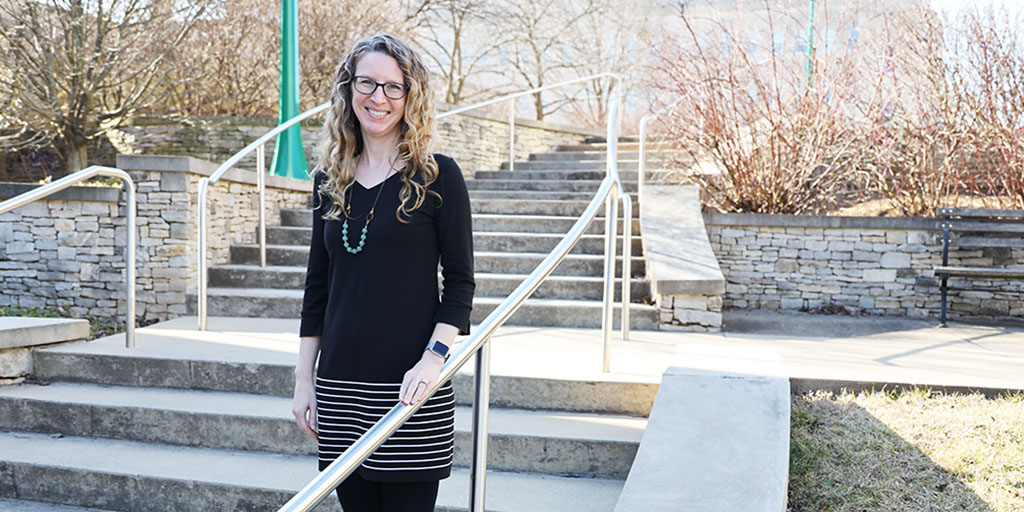By a series of her own well-orchestrated decisions, Jennifer Trueblood’s career has taken her on a compelling academic journey. It has also brought her back to the place she began – and to an ongoing exploration of decision-making processes.
Trueblood first came to IU from Huntsville, Alabama for a dual undergraduate degree program in the Jacobs School of Music, studying vocal performance and math. In that time, she became fascinated with cognitive science and after completing a master’s degree in math, went on to pursue a Ph.D. in cognitive science. She had discovered that her dual interests in math and cognitive science nicely intersected in the single area of mathematical psychology: “By using math,” she explains, “you could understand decision making and how people navigate their world.”
Completing her Ph.D. at IU in cognitive science with PBS Distinguished Professor Jerome Busemeyer, Trueblood then taught at UC Irvine and Vanderbilt University. This past fall she returned to IU in her new role as the Ruth N. Halls Professor of Psychological and Brain Sciences, bringing her Computational Decision Making Lab as well as its new and existing members along with her.
Trueblood studies decision-making processes by applying computational cognitive models to data collected in behavioral experiments. Her primary focus is on how context shapes the way decisions are made across a variety of different decision domains.
Let’s say you are looking for a house, she suggests, and you are considering two houses. “One house is more expensive but is newer and in a better location. The other is cheaper, but in a worse location. Then a new one pops up that is similar in location to the cheaper one but is more expensive. It makes the second option appear better. It changes how you think about the existing set of options.”
This is one example – an example they call “the decoy effect” – of the multi-alternative, multi-attribute decisions Trueblood studies. She has also studied a range of other situations, such as those common for juries in a criminal trial, for instance, in which the order that the jury receives information affects the decisions it makes.
Another area Trueblood and her lab have looked at extensively are the decisions pathologists and medical technologists make in assessing normal vs. abnormal or cancerous blood cells. Here they have found “that the base rate of normal to abnormal cells affects the errors that you make,” as she explains. Others have likewise studied this phenomenon in TSA baggage screeners at airports to suggest that the more frequent a situation is (baggage without guns, for example), the less likely someone is to recognize the relatively rare occurrence, whether a cancerous blood cell or a gun in a suitcase.




 The College of Arts
The College of Arts